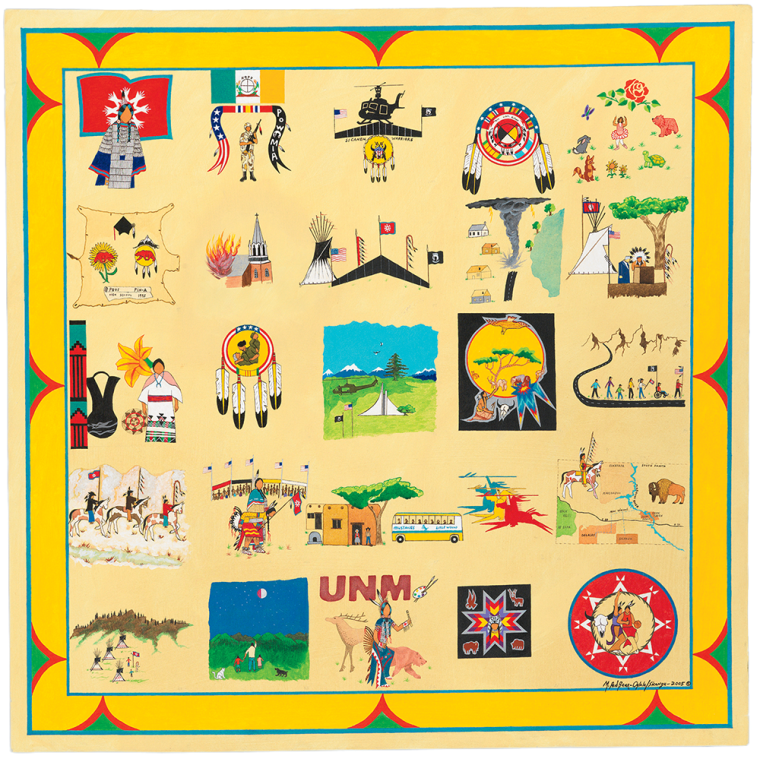The Indigenous people of the Great Plains, which in the U.S. reaches from Montana to Texas, are expert storytellers. But without a written language they historically relied on other means to pass down their personal and communal histories. Unbound: Narrative Art of the Plains—an exhibition opening June 1 at the National Museum of the American Indian in Washington, D.C.—considers the role of visual art in chronicling the lives of the Apsáalooke, Comanche, Kiowa, Lakota, and other people of the region’s Native nations. The show will present their accounts of war, family, ceremonies, and more via imagery emblazoned on historical and contemporary objects, including muslin dresses, hides, and canvases.

Red Bear’s Winter Count, Martin E. Red Bear (2004) (Credit: Courtesy of the National Museum of the American Indian)
In a traditional “winter count,” says Emil Her Many Horses, Unbound’s curator, a Native nation would document its experiences on an animal hide; the people would choose the most important event of the year to record on the hide. The image above, Red Bear’s Winter Count (2004), represents a newer take on that Plains art form. In Red Bear’s Winter Count, artist Martin E. Red Bear presents both an autobiography and an account of Oglala Lakota life on the Pine Ridge Indian Reservation in South Dakota. Rendered on canvas with acrylic paint, Red Bear’s Winter Count illustrates more than two dozen milestones, including the artist’s marriage to a Pueblo woman—represented by the image of a figure in a white dress beside a two-spouted wedding vase—and the day a tornado hit the Pine Ridge reservation in 1999.








